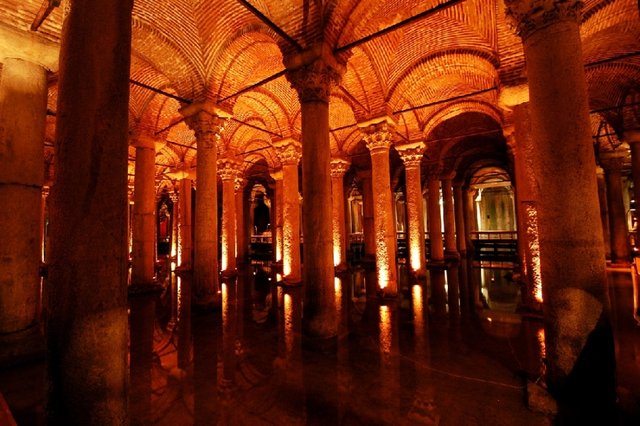THE TANK BASIL OR THE DIVING PALACE
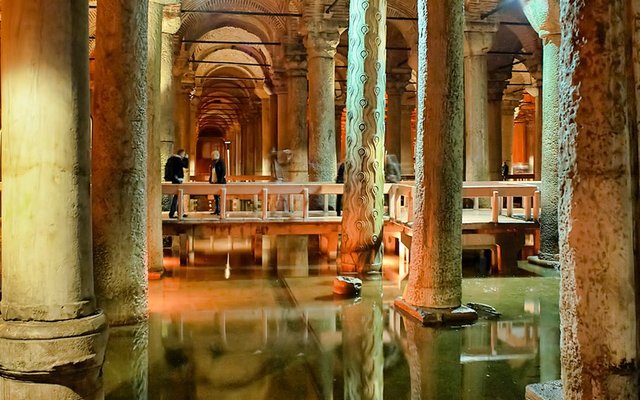
Those who visited the regions that once belonged to the Roman Empire certainly noticed the engineering skills of the Romans, who always seemed to be one step ahead of technology - they had plenty of technology. The buildings that defied time are the most telling witnesses of the level of civilization that the Romans had reached and that they tried to imprint on the conquered peoples. But in parallel with the surface world - fascinating and enriched after each victory - another world was being built underground, mainly to help the one above work. It's just that it couldn't be built anyway, because the artistic and architectural talent had to be valued here as well, which is why we will meet, in various places that once formed the great empire, true architectural treasures, which became important points of attraction.
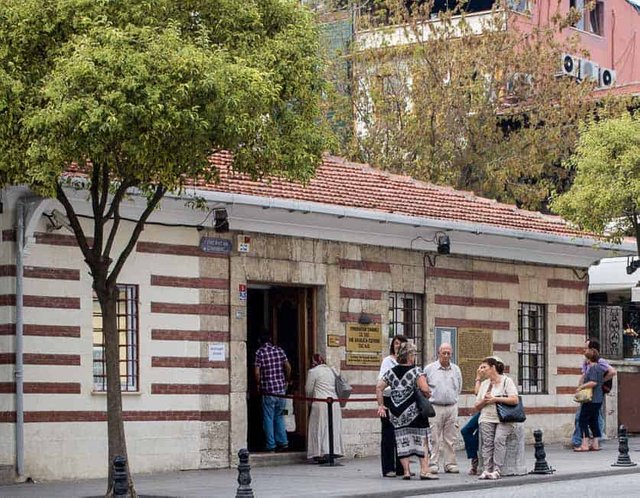
One such place is the Cistern Basilica (or Immersed Palace) in Istanbul, a building inherited from the Byzantines and used by the Ottomans after the conquest of Constantinople. The aqueduct systems of the Romans are famous all over the world, some of them are still functional and we even have such examples in our country. They had only one drawback, namely that the water could be contaminated by opponents, so the cities - especially the capital - had to provide the necessary water in case of an attack. Thus was built in Constantinople a whole system of reservoirs, where water brought from miles away was stored, constantly ensuring its restoration, to ensure the needs of the city in case the settlement was subjected to long-term sieges. .
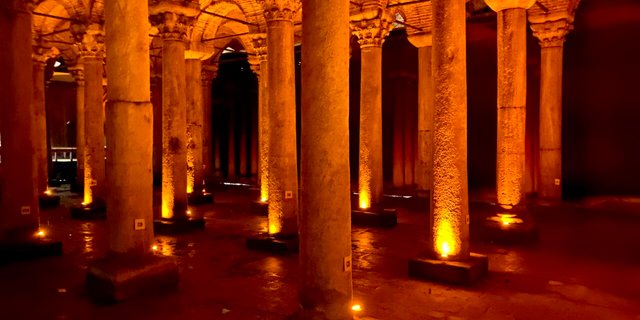
The Cistern Basilica, which is the subject of this article, is the largest underground reservoir in ancient Constantinople, part of a pool system built by order of Emperor Constantine I, the city's founder, and expanded two centuries later in the glory days of Byzantium. , under the leadership of Justinian I.
It is not at all accidental to introduce the Roman underground world, nor are the two names of the tank given without reason, for here thousands of workers have created the equivalent of a true palace, with Byzantine arches and no less than 336 columns of marble carved in the Corinthian and Doric styles, with a height of more than 9 meters. Diffuse light is the only thing that reminds you that you are underground.
The basin could store up to 100,000 tons of water, feeding mainly the palace (initially the Byzantine Imperial Palace and later the Topkapi Palace), but also the adjacent buildings - it was connected even with the famous (and coveted) St. Sophia Cathedral nearby.
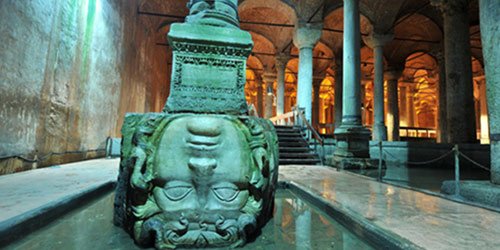
If we find out where the name of the palace comes from, with a basilica we will discover that it has nothing in common (from an architectural point of view), except that the reservoir was built on the site of an old religious building.
But, in addition to the spectacular columns, arranged symmetrically, in 12 rows of 28 columns, another point of interest is the sculpture of the head of Medusa, present in three different poses, of which only two have been preserved: lying and sideways. In ancient mythology, this character was one of the Gorgon sisters (frightening creatures), who, being in love with Perseus, the son of Zeus, would have attracted the wrath of the goddess Athena; she turned her hair into snakes and cursed her to turn everyone who looked into her eyes into stone sheepfolds.
The fact that we encounter this symbol, frequently present in ancient buildings with a role of protection against evil spirits, but also robberies, shows us that, although the Romans had adopted Christianity for more than two centuries, they still kept some ancient customs with pagan roots.
For several decades, the Immersed Palace has been transformed into a museum and has become one of the city's attractions, being a true example of Byzantine architecture that has gained over the years (even though it has undergone several repairs over time). From my point of view, the fascination is created not only by architecture - because we are not unfamiliar with the details and ornaments of Byzantine buildings, nor their dimensions - but also by the fact that, once again, we confirm the inclination of this people to beauty. , even where you would be tempted to believe that it cannot exist, namely underground, in a building with a strictly utilitarian role.
